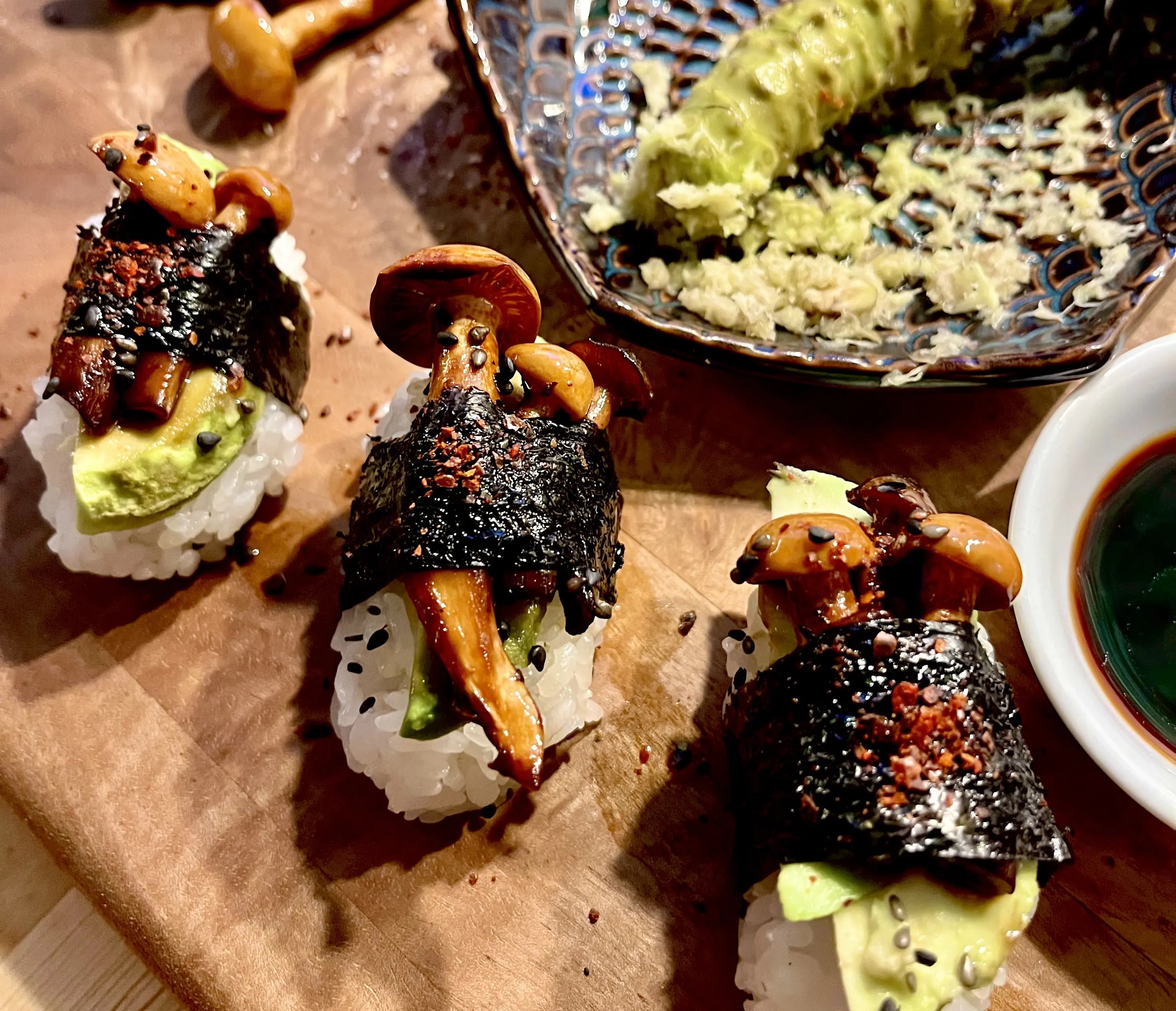Shimeji

Shimeji mushrooms are native to the mountains of Japan, and have been part of Japanese cuisine for centuries, with written records of them dating all the way back to the 1600s. Because of their versatility, they have become popular in the cuisines of many other cultures (particularly Korean and Chinese), and therefore you might see them referred to by a host of other names, including “beech mushrooms,” “clamshell mushrooms,” or “hon-shimeji.” You will commonly find them in two different colors, white and brown. White shimejis will often be referred to as “Alba.” Besides aesthetics, there is not much difference between the colors, and you might think of them as being as relative to each other as brown button mushrooms are to white button mushrooms.
Shimejis are highly regarded for their unique flavor profile and impressive health benefits. In fact, research suggests that they may help fight inflammation, reduce cholesterol levels, boost the immune system, and protect against certain types of cancer.Shimeji mushrooms are small and have a tender, satisfying texture, making them an ideal ingredient to use in salads, soups, and stews. They have a mild nutty flavor that is balanced by hints of sweetness. Shimejis seem to have been made for stir frying. Their perfect bite size makes them ideal for cooking whole, and their prototypical “mushroom” shape -- with long stem and dainty cap – is an attractive and eye-catching element amongst a sauteed tumble of colorful veggies.
Beyond stir-frying, Shimejis translate easily into just about any recipe that calls for mushrooms, and stand up well to roasting, baking, and braising. They are one of the best mushrooms for substituting for seafood in vegan sushi, as their texture and umami easily replaces the satisfying elements of fish and shellfish. Braise Shimejis in mirin and soy sauce, then neatly place atop slices of avocado and nori, a dab of wasabi, and finish with a drizzle of sesame oil – chef kiss!
Shimejis are also one of our favorite mushrooms for pickling, and in fact can be whipped into a speedy quick pickle within half an hour or less of marinating. Just mix equal parts vinegar and water, optional quantities of salt and sugar to taste, and your preferred combination of brining elements such as mustard seeds, bay leaves, dried chilis, and peppercorns. Pack shimejis in a clean jar, cover with brine and spices, and refrigerate for 20 – 30 minutes, then enjoy! If you haven’t already snacked on all of them right out of the jar, pickled shimejis make a cool addition to charcuterie boards, antipasto, bean salad, ramen, and poke. They pair particularly well with seafood, alongside lemon and capers. If you use red wine vinegar, sliced red onions, and white shimejis, the pickles will come out bright pink. Try skewering one between an olive and a gherkin for garnishing your next Bloody Mary – a personal favorite!
